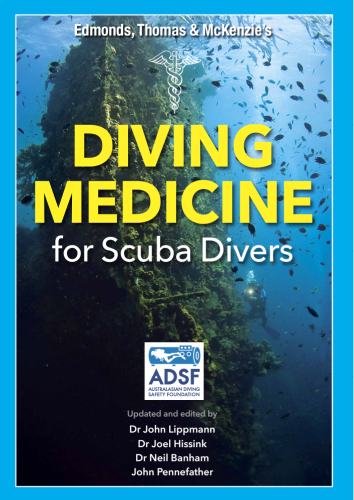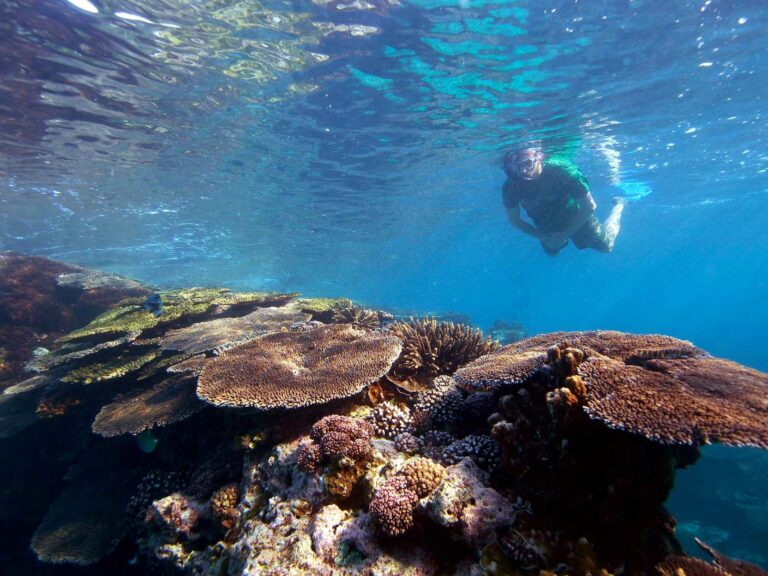Snorkelling fatalities are most likely to result from pre-existing health conditions, inexperience, ignoring adverse conditions and “going solo”, according to a new Australian report that is cautious about pinning deaths on Immersive Pulmonary Oedema (IPO) – the “drowning from inside” condition blamed for the majority of such fatalities in a 2021 Hawaiian study.
The new statistics-based report, published in the journal Diving & Hyperbaric Medicine, is written by an expert in the field, Dr John Lippmann.
He analysed the snorkelling and breath-hold deaths reported in Australia over the five years between 2014 and 2018, and compared them with earlier such studies to identify ongoing problems and assess the effectiveness of counter-measures.
Also Read: One state agency fines another for snorkeller’s death
His report reinforces a previous study that had highlighted age and pre-existing medical conditions as common risk factors, alongside issues such as inexperience, planning failures and unsafe practices.
“Increasing age, obesity and associated cardiac disease have become increasingly prevalent in snorkelling deaths,” says Dr Lippmann, calling for better health surveillance and risk-management as well as closer supervision of inexperienced snorkellers.
Snorkelling can increase heart workload and anxiety levels, points out the report, which describes the 91 victims as “predominantly middle-aged males, many of whom had pre-existing medical conditions, which predispose them to an incident while snorkelling.”
Snorkellers and freedivers
The fatal incidents reported during the period involved 78 men and 13 women ranging in age from 16 to 80 (median 48). Some 55 of the victims were mainly snorkelling at the surface, while 33 were doing at least some breath-hold diving, though the freedivers tended to be younger, averaging 38.
Of the 77 snorkellers whose body mass index was known, 52 were overweight or obese. At least 38 victims were reportedly good swimmers but 16 or more were described as weak or even non-swimmers, possibly relying on flotation devices. At least 17 victims had not been wearing fins.
Of the 58 incidents in which the victim’s experience level was indicated, only 22 were practised snorkellers. Seven of these were also certified scuba divers, two of them instructors. Of the remaining “novices”, at least five were first-time snorkellers.
The breath-hold divers tended to be more experienced (67%) than the surface snorkellers. A number of the freedivers were engaged in harvesting seafood such as abalone, or spearfishing in areas frequented by predators (sharks accounted for five deaths, crocodiles one).
They often took inadequate precautions, such as not having a buddy or taking account of sea conditions.
The deepest fatal freedive was to about 21m. “Many breath-hold divers still fail to appreciate that black-outs occur rapidly, generally without warning, and unless a vigilant buddy is present and accessible, drowning is a likely outcome,” points out the report.
Alone, even in a crowd
Of the 91 overall fatalities, 46 were Australian residents, 35 of these swimming in local waters. Of the tourists, 25 were from Asia, seven each from the UK and North America and six European. Most victims had been snorkelling privately, though 20 were out with a commercial operator.
At least 42 snorkellers were without a buddy when the fatal incident occurred, including 10 within large supervised groups. Only 26 were accompanied.
“Most of the victims were alone at the time of their incident, whether they had set off solo or become separated from their buddy or group,” says the report.
“Despite repeated advice about the benefits of an effective buddy system, which may enable more rapid recognition of a problem and subsequent assistance, sadly this is often ignored.”
Primary drowning was likely to have been the “disabling condition” in 39% of the cases, and drowning was recorded as cause of death in two-thirds. Heart conditions were the likely disabling condition in 31% of cases, though they were recorded in only 21%.
The most common “predisposing factors”, identified in 87 of the incidents, were planning-related, usually a decision to snorkel solo or in unsuitable conditions; or health-related, including severe ischemic heart disease (IHD), obesity, hypertension, diabetes, seizures, cardiomegaly (heart enlargement) and left ventricular hypertrophy (LVH).
Prevalence of cardiomegaly and LVH reflected the hypertension reported to affect one in three Australian adults – although only 18% of these victims had been previously diagnosed with the condition.
“LVH is associated with an increased risk of cardiac arrhythmias and, when combined with moderate to severe IHD, likely explains the high incidence of cardiac-related deaths in both snorkellers and scuba divers,” says Dr Lippmann.
“The effects of immersion, exertion, anxiety, aspiration, the diving reflex, cold and increased respiratory resistance provide a potent mix of precipitants in a cardiac event in a susceptible individual.”
IPO in perspective
Death from IPO can be difficult to distinguish from primary drowning after the event, even with a post mortem examination, and this is recognised in the study.
Cause of death was recorded as drowning in 67% of cases and cardiac failure in 21%. Asphyxia was the likely disabling agent in 38% of cases, though IPO was an alternative in one of these. In the 31% of incidents identified as having cardiac causes, IPO was a possibility in two.
“Diagnosis of IPO in the Australian fatalities is appropriately conservative, and relies heavily on witness accounts and the victim’s medical and snorkelling history,” says Dr Lippmann. “Dyspnoea [laboured breathing] with coughing, often with frosty bloodstained expectoration, are used as primary indicators of severe IPO.
“In the absence of these indications, other potential disabling conditions such as primary drowning or cardiac arrhythmias with or without secondary drowning are prioritised depending on supporting evidence, which can sometimes be rather speculative in the absence of definitive tests.”
While there was no doubt about the existence of IPOs and the likelihood that they were under-reported, the claim of the Hawaii Snorkel Safety Study that most snorkelling deaths in the Pacific islands might be due to IPO/ROPE (Rapid Onset Pulmonary Oedema) was “not supported by the Australian fatality data”, says Dr Lippmann.
Referring to the IPO survivors who responded to the Hawaii survey, he says that the main symptoms they had reported were dyspnoea, fatigue and limb weakness, which arguably could result from exertion and breath-holding alone, or comparatively mild IPO.
No specific question had been included in the survey about coughing or expectoration, he pointed out, even though these symptoms were “likely indications of a more severe event”.
In addition, the survey respondents were younger and with a more even male/female split, so might not represent the cohort of deceased snorkellers in Hawaii, many of whom matched the Australian pattern of middle-aged males, and were predominantly tourists.
Dr Lippmann also points out that serious IPO incidents and deaths are not necessarily “silent”, as they can be portrayed, but that victims often show “significant signs of distress“.
“The trouble is that it’s almost impossible to differentiate [IPO] from drowning at autopsy,” Dr Lippmann told Divernet. “There’ve been a few suggested protocols tried but none to date seems to be reliable.
“The best way is through prompt echoes [echocardiograms] and histories in survivors but that’s not common – although it has been done in some Swedish triathlon swimmers to good effect.
“It’s important to educate folks about the potential pitfalls of snorkelling so they better understand the risks, of which IPO is certainly one. Cardiac issues in the ageing person is a big one, as it is with scuba.”

Dr Lippmann is chairman and CEO of the Australasian Diving Safety Foundation (ADSF), adjunct senior research fellow at Monash University, Melbourne and senior research fellow of the Royal Life Saving Society. He has just released an updated 42-chapter edition of the ADSF Diving Medicine for Scuba Divers ebook for free download.
Also on Divernet: Red flags for snorkellers: how to stop the quiet deaths, The Hawaiian Snorkelling Deaths Mystery, Surviving IPO: A diver’s perspective, Lack of evidence impedes Sharm snorkel death probe, Breathless swimmer’s case boosts IPO awareness

